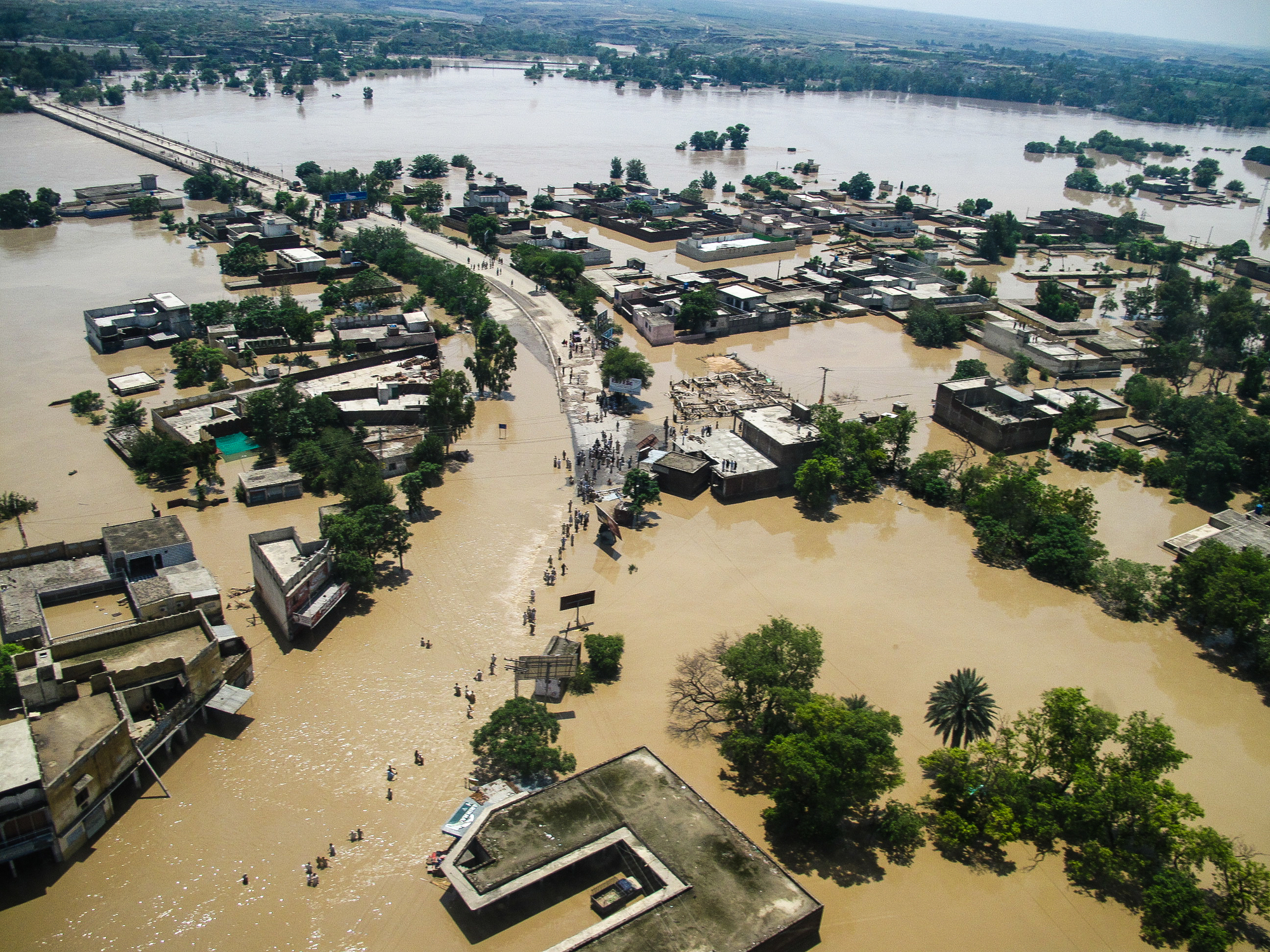The Pakistan floods have brought on a double burden of communicable, and non-communicable diseases, fuelling more inequality and health disparities
With a population approaching 225 million, Pakistan is the fifth most populous country in the world. Existing inequalities and health issues in Pakistan have been further exacerbated by the COVID-19 pandemic, political turmoil, the situation in the neighbouring country Afghanistan – and now, the Pakistan floods due to severe climate change.
Research into Pakistan’s health trends across four provinces and three territories demonstrates that this natural disaster, beginning in June 2022, has influenced disease outbreaks in flood-ravaged areas, impacting serious malnutrition, too.
More than 33 million people have been affected – half of whom are children
Pakistan’s rate of stunting among children was already high before the record rainfall which impacted the floods. 2019 estimates demonstrated that Balochistan, a providence of Pakistan, had the highest prevalence of stunting, and Punjab had the highest prevalence of wasting for children under 5.
Published in The Lancet Global Health, this study demonstrates that the top five leading causes of premature mortality in 2019 were neonatal disorders, ischemic heart disease, stroke, diarrheal diseases, and lower respiratory infections. Child and maternal malnutrition, air pollution, high systolic blood pressure, dietary risks, and tobacco consumption were the leading risk factors for death and disability-adjusted life years in 2019. In 2023, however, this is changing.
“Pakistan’s baseline before being hit by extreme flooding was already at some of the lowest levels around the globe”
Dr. Ali Mokdad, Professor of Health Metrics Sciences at IHME, said about the Pakistan floods: “What these findings tell us is that Pakistan’s baseline before being hit by extreme flooding was already at some of the lowest levels around the globe.
“The evidence couldn’t be any clearer. Pakistan is in critical need of more equitable investment in its health system and policy interventions to save lives and improve people’s health.”
Safety and security rapidly deteriorated following the floods
Pakistan has also experienced a slowdown in the reduction in maternal and child mortality, high fertility rates, and persistent issues of gender disparities, which are expected to worsen as safety and security rapidly deteriorated following the Pakistan floods.
Although progress has been made, Pakistan’s health status is falling behind that of its neighbours and similarly ranked socio-demographic index comparator countries.
Pakistan has been facing increased cases of infectious diseases that are impacting the population unequally, including tuberculosis, hepatitis, typhoid, and paratyphoid.

Dr. Zainab Samad, Professor and Chair of the Department of Medicine at Aga Khan University added: “The country urgently needs a single national nutrition policy, especially as climate change and the increased severity of drought, flood, and pestilence threatens food security.
“Now that we’re armed with these latest findings that are stratified by location, age, and sex, we can share them with the Pakistani government’s task force that’s been working to address children’s health to reduce malnutrition.”
Serious equity issues are worsening
Over the last 30 years, the top five causes of disease burden have shifted from communicable to NCDs. Cardiovascular disease, cancers, and diabetes are becoming major causes of death and disability.
Researchers predict that these NCDs will be the three leading causes of death in the next 30 years.
This is a worrying reality, as Pakistan’s health status has already fallen behind that of its neighbours and other countries with a similar Socio-demographic Index (SDI) – SDI is a composite average of the incomes per capita, average educational attainment, and fertility rates of all areas in the GBD study.
Researchers predict that these NCDs will be the three leading causes of death in the next 30 years
The overall SDI of Pakistan increased during the 20-year span of the study, but the gap between the highest and lowest SDI units increased by 54%. The lowest SDI among Pakistan’s provinces and territories was higher than that of Afghanistan and lower than that of Nepal.
Dr. Samad added: “Our fragile health and economic systems are ill-equipped to handle the current and future NCD burden.
“We have seen national action plans on NCDs, but implementation is largely lacking and much needed in this area.”
Dr. Rana Muhammad Safdar, a field epidemiologist and the former Director General, said: “Readjusting our response to evolved challenges, we must simultaneously tackle the COVID-19 pandemic, address infectious disease challenges, and curb rising rates of non-communicable diseases.
“Prioritizing these three areas will enhance Pakistan’s ability to make strides toward the achievement of universal health coverage and meet its Sustainable Development Goals.”











